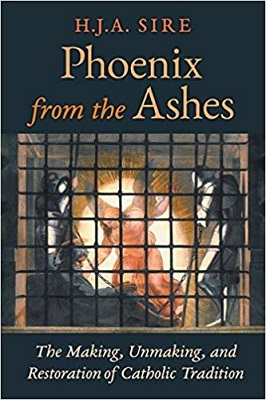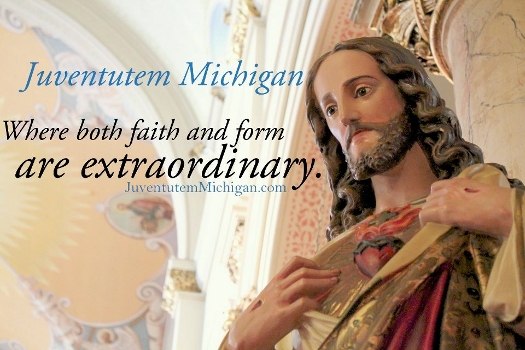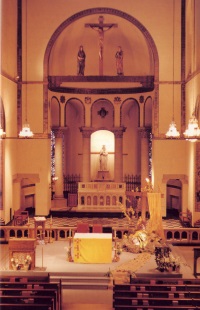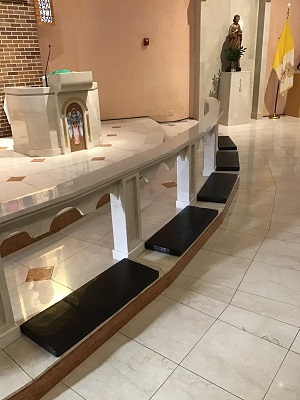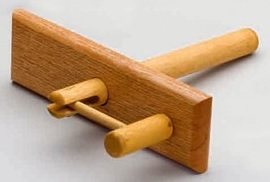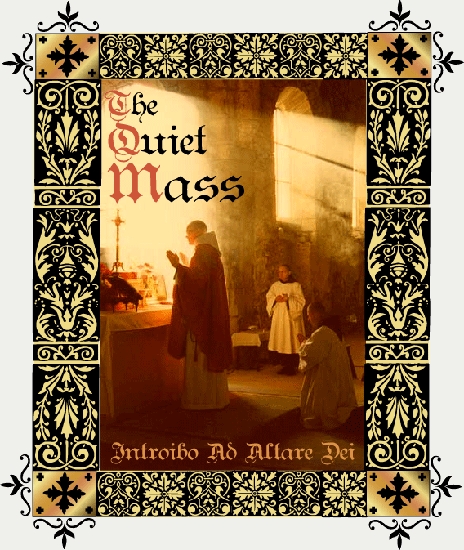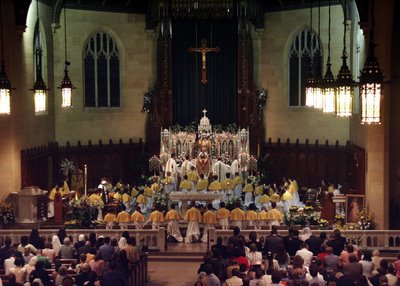
Please note: Red font indicates confirmed events. Contact all other parishes to confirm Holy Week events & times.
Maundy Thursday
- Thu. 7:30 AM: Low Mass at Assumption Grotto, Detroit
- Thu. 8:00 AM: Low Mass (Confessions Thursdays: 7:00 - 7:30 PM during Benediction) at St. Joseph's Church, Ray Township [NB: See note at bottom of this post about SSPX sites.]*
- Thu. 4/18 6:00 PM: Confessions St. Joseph Oratory, Detroit (Holy Thursday)
- Thu. 4/18 7:00 PM: Solemn High Mass, Procession to the Altar of Repose, the Mandatum (Conclusion of Adoration at Midnight), at St. Joseph Oratory, Detroit (Holy Thursday) St. Joseph Cappella, Missa O Quam Gloriosum - Victoria (Holy Thursday)
- Thu. 4/18 7:00 PM: High Mass at Oakland County Latin Mass Association/Academy of the Sacred Heart Chapel, Bloomfield Hills (Holy Thursday)
- Thu. 04/18 7:00 PM: Tridentine Mass of the Last Supper at Assumption Grotto, Detroit (Maundy Thursday)
Good Friday
- Fri. 8:00 AM: Low Mass (Confessions 6:30 PM - 7:30 PM during Holy Hour) at St. Joseph's Church, Ray Township [NB: See note at bottom of this post about SSPX sites.]*
- Fri. 4/19 12:00 PM-3:00 PM: Tre Ore Services at Assumption Grotto, Detroit (Good Friday)
- Fri. 4/19 1:00 PM: Confessions at St. Joseph Oratory, Detroit (Good Friday)
- Fri. 4/19 2:00 PM: Stations of the Cross and Divine Mercy Chaplet at St. Joseph Oratory, Detroit (Good Friday)
- Fri. 4/19 3:00 PM: Solemn Liturgy of the Passion and Death of Our Lord at St. Joseph Oratory, Detroit Chant Schola, Turbarum Voces (Responses of the Crowd) - Byrd (Good Friday)
- Fri. 4/19 3:00 PM: Divine Mercy Prayers at Assumption Grotto, Detroit (Good Friday)
- Fri. 4/19 7:00 PM: Stations of the Cross followed by Tridentine Mass at Assumption Grotto, Detroit (Good Friday) (Knights of Columbus Fish Fry 3:00-6:30 PM)
- Fri. 04/19 1:30 PM: Chanted Service at OCLMA/Academy (Good Friday)
- Fri. 7:00 PM (1st Fridays only): High Mass at Old St. Mary's, Greektown, Detroit
- Fri. 7:00 PM: Tridentine Mass at St. Joseph, Sarnia, Ontario
- Fri. 7:00 PM (after 6:00 PM Holy Hour, 1st Fridays only): High Mass at St. Joseph Oratory, Detroit
Holy Saturday
- 8:00 AM (1st Saturdays): Low Mass at St. Edward on the Lake, Lakeport
- Sat. 8:00 AM: Low Mass (Confessions 8:30 AM to 9:30 AM) at St. Joseph's Church, Ray Township [NB: See note at bottom of this post about SSPX sites.]*
- Sat. 8:00 AM: Low Mass (Confessions 1/2 hour before Mass: call beforehand) at St. Ann's Church, Livonia [NB: See note at bottom of this post about SSPX sites.]*
- Sat. 8:30 AM: Low Mass at Miles Christi, South Lyon, MI
- Sat. 9:00 AM (1st Saturdays): High Mass at St. Anthony, Temperance
- Sat. 4/20 8:00 AM: Confessions at St. Joseph Oratory, Detroit (Holy Saturday)
- Sat. 4/20 9:00 AM: Tenebrae with full chant & polyphony (St. Joseph Cappella) at St. Joseph Oratory, Detroit (Holy Saturday)
- Sat. 4/20 1:00 PM: Blessing of Easter Food and Baskets at Assumption Grotto, Detroit (Holy Saturday)
- Sat. 4/20 8:00 PM: Tridentine Easter Vigil Mass Assumption Grotto, Detroit (Holy Saturday Easter Vigil)
- Sat. 4/20 8:00 PM High Mass at OCLMA/Academy (Easter Vigil)
- Sat. 4/20 9:00 PM: Easter Vigil Mass at St. Joseph Oratory, Detroit (Holy Saturday, Easter Vigil) - St. Joseph Cappella, Missa O Rex gloriae - Palestrina
Easter Sunday
- Sun. 7:30 AM and 10:00 AM: Low Mass (Confessions 45 minutes before and after Masses) at St. Joseph's Church, Ray Township [NB: See note at bottom of this post about SSPX sites.]*
- Sun. 8:00 and 10:30AM Low Mass (Confessions 1/2 hour before Mass: call beforehand) at St. Ann's Church, Livonia [NB: See note at bottom of this post about SSPX sites.]*
- Sun. 8:00 AM (& Holy Days at 12:00 Noon): Tridentine Mass at St. Edward on the Lake Catholic Church, Lakeport
- Sun. 4/21 9:00 AM: Low Mass with Organ St. Joseph Oratory, Detroit (Easter Sunday)
- Sun. 4/21 9:30 AM: Latin Orchestral high Mass with choir Assumption Grotto, Detroit Mass setting: Beethoven's Mass in C Major (Easter Sunday).
- Sun. 9:45 AM: High Mass at OCLMA/Academy of the Sacred Heart, Bloomfield Hills
- Sun.: [occasional Tridentine Masses: contact parish] at Our Lady of the Scapular Parish
- Sun. 4/21 11:00 AM: Solemn High Mass at St. Joseph Oratory, Detroit (Easter Sunday) St. Joseph Cappella, Missa O Rex gloriae - Palestrina
- Sun. 12:00: High Mass at St. Mary Star of the Sea, Jackson
- Sat. 12:30 PM (2nd Sundays): Tridentine Mass at Old St. Patrick's, Ann Arbor
- Sun. 2:00 PM (1st Sundays only):St. Alphonsus Church, Windsor, Canada
- Sun. 2:00 PM (every Sunday except 1st): High Mass at Holy Name of Mary, Canada
- Sun. 3:00 PM (2nd and 4th Sundays): Tridentine Mass (call ahead for Confession times, 989-892-5936) at Infant of Prague, Bay City [NB: See note at bottom of this post about SSPX sites.]*
- Sun. 3:00 PM: High Mass St. Matthew Catholic Church, Flint
- Sun. 6:00 PM: Tridentine Mass at SS. Cyril & Methodius Slovak Catholic Church, Sterling Heights
- Sun. 4/21 6:00 PM: Solemn Verspers and Benediction at St. Joseph Oratory, Detroit (Easter Sunday)
* NB: The SSPX chapels among those Mass sites listed above are posted here because the Holy Father has announced that "those who during the Holy Year of Mercy approach these priests of the Fraternity of St Pius X to celebrate the Sacrament of Reconciliation shall validly and licitly receive the absolution of their sins," and subsequently extended this privilege beyond the Year of Mercy. These chapels are not listed among the approved parishes and worship sites on archdiocesan websites.




